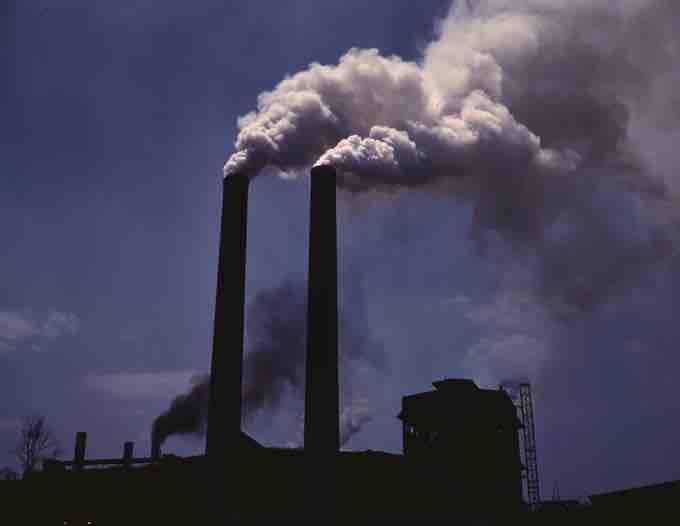Air pollution is the presence of harmful molecules or particulates, both natural and man-made, in the atmosphere.
Effects of Air Pollution
Increases in these atmospheric molecules and particles result in:
- The greenhouse effect: an elevation in the Earth's surface temperature due to the absorption of electromagnetic radiation by atmospheric gases.
- Decreased stratospheric ozone: a depletion in ozone levels caused by the release of refrigerants, which produce free radicals that catalyze the decomposition of ozone.
- Acid rain: acidic precipitation that occurs when the pollutants sulfur dioxide and nitrogen oxide react with water in the atmosphere.
- Increased ozone concentrations at ground levels: an increase in surface ozone that contributes to smog.

Air pollution
The output of industrial manufacturing processes is a major source of air pollution.
Major Pollutants and Their Effects
The main air pollutants produced by humans are:
- Sulfur oxides (SOx)
- Nitrogen oxides (NOx)
- Carbon monoxide (CO)
- Carbon dioxide (CO2)
- Volatile organic compounds (VOCs)
- Particulates
- Free radicals
- Metals
- Chlorofluorocarbons (CFCs)
- Ammonia (NH3)
- Odors
- Radioactive compounds
Air pollutants are considered primary when the harmful particles are directly emitted into the atmosphere; secondary pollutants are products of reactions that occur following emission. Secondary pollutants include:
- Smog
- Ground level ozone (O3)
- Peroxyacetyl nitrate
Air pollution is also a problem indoors, where poor health has been linked to pollutants like radon, VOCs, lead paint, combustion particulates, carbon monoxide, and asbestos. Air pollution contributes to poor health through respiratory conditions, heart disease, and lung cancer. Approximately 3.3 million deaths worldwide are attributed to indoor and outdoor air pollution, with children in developing countries at particular risk for illness or disease.